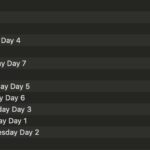Mathematica is a powerful computational software program used in scientific, engineering, mathematical, and computing fields. While it is a commercial product, learning its basics doesn’t have to break the bank. This guide will explore how to access Mathematica, where to find free learning resources, and how to get started with this versatile tool, focusing on the keyword “A Beginners Guide To Mathematica Free Download.”
Accessing Mathematica
Mathematica is not inherently free software, but there are several legitimate ways to access it without purchasing a full license right away.
- Wolfram Cloud Basic: Wolfram offers a free tier of their cloud service, Wolfram Cloud Basic. This provides access to a limited version of Mathematica through a web browser. It’s an excellent option for beginners to explore the interface and basic functionalities.
- Free Trial: Wolfram provides a free trial of the desktop version of Mathematica. This trial period usually lasts for 15 to 30 days and offers full access to all features, allowing you to thoroughly evaluate the software.
- Educational Licenses: If you are a student or faculty member, your institution may have a site license for Mathematica. Check with your IT department or academic advisors to see if you’re eligible for a free or discounted license.
- Raspberry Pi: Mathematica is included free with every Raspberry Pi. If you own a Raspberry Pi device, you already have access to a full desktop version of Mathematica.
Free Learning Resources for Mathematica
Once you have access to Mathematica, the next step is learning how to use it. Thankfully, Wolfram provides a wealth of free resources to help beginners get started.
- Wolfram’s Documentation Center: The official Wolfram Documentation Center is an exhaustive resource with detailed explanations, examples, and tutorials covering every aspect of Mathematica. It’s like having a complete manual at your fingertips.
- Wolfram U: Wolfram U offers free online courses, video tutorials, and interactive notebooks for learning Mathematica. These resources are designed for various skill levels, from beginners to advanced users.
- Wolfram Demonstrations Project: This project contains thousands of interactive demonstrations created by Mathematica users. You can download these demonstrations and explore the code to learn different programming techniques.
- Community Forums: The Wolfram Community is an active online forum where you can ask questions, share your work, and connect with other Mathematica users. It’s a great place to find help and inspiration.
Getting Started with Mathematica
Here’s a quick overview of essential concepts to get you started:
- The Interface: Mathematica uses a notebook interface, where you enter commands and see the results. Each notebook is made up of cells, which can contain code, text, or graphics.
- Basic Syntax: Mathematica uses a functional programming paradigm. Functions are applied to arguments using square brackets:
Function[Argument]. - Built-in Functions: Mathematica has thousands of built-in functions for performing mathematical operations, data analysis, and visualization. Explore functions like
Plot,Integrate,Solve, andListPlot. - Variables and Assignments: You can assign values to variables using the
=operator. For example,x = 5assigns the value 5 to the variablex. Use: =for delayed assignment, which evaluates the right-hand side only when the variable is used. - Lists: Lists are fundamental data structures in Mathematica. They are enclosed in curly braces
{}and can contain numbers, symbols, or other lists. For example,{1, 2, 3}is a list of three numbers. - Pattern Matching: Mathematica’s pattern matching capabilities allow you to define functions that operate on specific types of expressions. This is a powerful feature for writing concise and elegant code.
Example: Simple Plotting
Let’s create a simple plot of the sine function:
Plot[Sin[x], {x, 0, 2 Pi}]This command uses the Plot function to graph Sin[x] over the range x = 0 to x = 2π.
An example plot of the sine function created in Mathematica, showcasing its visualization capabilities.
Conclusion
Mathematica is a valuable tool for anyone working with complex computations and data analysis. While a full license comes at a cost, the availability of Wolfram Cloud Basic, free trials, educational licenses, and the inclusion of Mathematica with Raspberry Pi devices make it accessible to beginners. Combined with the extensive free learning resources provided by Wolfram, anyone can start learning Mathematica and unlock its potential. Take advantage of these opportunities and begin your journey with Mathematica today.
Further Exploration
- Wolfram website: https://www.wolfram.com/
- Wolfram Cloud: https://www.wolframcloud.com/
- Wolfram U: https://www.wolfram.com/wolfram-u/
